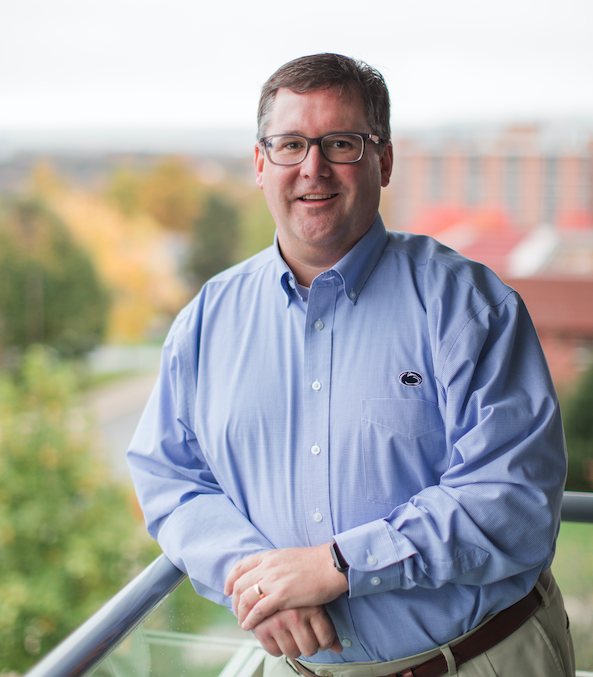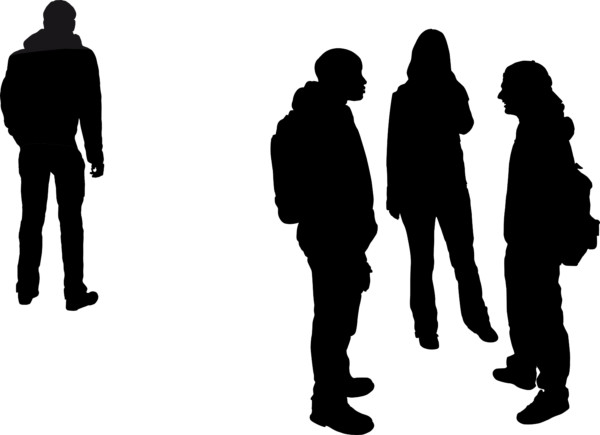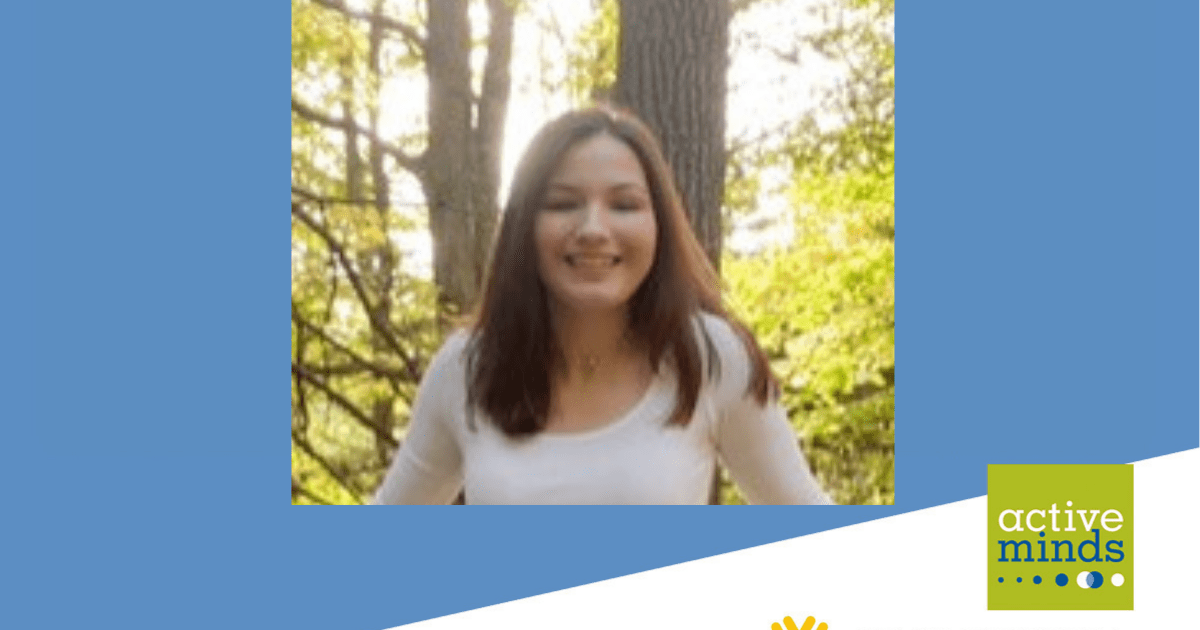The state of college student mental health came sharply into focus around 2006 when a group of counseling center staff from centers across the nation, in collaboration with the newly-formed Center for Collegiate Mental Health (CCMH), created a standardized data set that could be used by counseling centers throughout the country. For the first time, mental health information from students receiving services could be compared and considered in the aggregate. This innovative idea would evolve into the CCMH’s annual report, used by practitioners, administrators, and journalists alike to examine trends in student mental health, including the sharp increases in demand for services over the past decade and the shifting landscape of college student mental health.
Brett Scofield began as the CCMH Executive Director in June 2021, having worked closely for seven years with former Executive Director and founder, Ben Locke. Together, Ben and Brett, in collaboration with the CCMH staff, developed the Critical Load Index, an important tool the center offers to help directors to understand the supply-demand balance for services at their centers. A self-described data nerd, Scofield does an excellent job explaining the many facets of information the center collects on students, therapists and counselors, but he emphasizes that CCMH is more than just a numbers factory. He wants to expand CCMH’s outreach efforts as a partner to schools in improving the mental health of their students by offering topic-based webinars and credit-bearing workshops to individuals who work closely with college students.
CCMH’s much-anticipated 2022 annual report will be out next week, and Scofield says it includes updated information about mental health trends. In this interview, he offers us a “sneak peek” of the findings and provides a comprehensive overview of the world he studies.
MCI: First, what is your personal history with CCMH?
BS: I have been involved with CCMH for over eight years. For the first seven of my years, I worked very closely with Ben Locke. When he set out on his new pathway, I transitioned to the Executive Director role. I love CCMH, and the work we do on behalf of college counseling centers is a big passion of mine. It’s one of the primary reasons I’m here at Penn State. Having the opportunity to join this organization back in 2014 when this position opened up was a no-brainer for me because I really love the mission of CCMH. I work with a wonderful staff, research team, and national advisory board, who are all very committed to CCMH and our mission.
MCI: We know a lot about the data. Tell us more about the organization itself.
BS: The mission of CCMH is to bridge the gap between science and practice in the field of college student mental health. Currently, we have almost 770 member institutions. Counseling centers who are part of our membership have access to several different benefits that we provide, including the use of our tools. All members contribute some level of data to CCMH, whether that is information about their center or de-identified clinical information from students receiving care. We use that data, in turn, to benefit the counseling centers, administrators, researchers, the public, and most importantly, the students receiving care.
CCMH’s earliest origins were about 18 years ago in 2004. We knew at the time the landscape of college student mental health was changing underneath our feet in terms of rising demand for services. There was a sense that student mental health needs were increasing, but we did not have a lot of national data to support this. Back then, it was just anecdotal summaries or suggestions of what people should do, and usually the most confident or loudest voice would win the day.
Ben Locke was an early career psychologist working at the counseling center here at Penn State and he had a novel idea to address the lack of information. “Why don’t we collect standardized data as part of the routine clinical practice when students receive care at counseling centers?” If the information is standardized, so student A is being asked the same questions as student B, who is at another institution across the country, we could compare centers and examine trends nationally as well as locally. That was the context involved in the philosophical founding of CCMH in 2004.
In 2006, a representation of counseling center staff got together at a conference here at Penn State and developed the questions that we would ask students when they come in for services. That was the earliest origins of the SDS, which is the Standardized Data Set. It asks about demographics, treatment history, social support, safety issues, etc., so it basically functions as an intake form. The other critical part that was added was the assessment tool. In 2006, the University of Michigan Counseling Center donated the Counseling Center Assessment of Psychological Symptoms (CCAPS) to CCMH to use as a multidimensional assessment/outcome monitoring tool. The CCAPS was initially developed at the University of Michigan Counseling Center around 2000, and further work on the instrument has been completed by CCMH from 2006 to the present. Currently, the CCAPS is the most widely used instrument that measures college student distress within higher education. It provides feedback to clients and therapists about their current levels of distress and how their symptoms are changing over time.
MCI: Your annual report is widely read and referred to regularly. What pieces of information does it provide? And what’s in store for this year?
BS: Our annual report is very comprehensive. As we collect more data and add more instruments, we are able to provide different layers of analyses. A big part of our annual report is mental health trends: what is changing over time in terms of student distress, safety issues, and treatment history? For example, have they experienced any traumatic events; do they have a history of suicide attempts? We examine students’ self-reported data and how these responses change over time.
Two of the primary findings from this year’s report is trauma and social anxiety really need to be on our radar. They are two of the variables that have increased the most over the past decade.
“A big part of our annual report is mental health trends: what is changing over time in terms of student distress, safety issues, and treatment history?”
Students are increasingly entering counseling reporting experiences of sexual violence and trauma from childhood. Social anxiety, which is associated with isolation, is another concern that is escalating. General anxiety has also steadily increased over the past decade, but the change in social anxiety really stood out to us, particularly in the past year. Social anxiety was gradually increasing pre-pandemic, and then during the pandemic, it rose significantly, especially when students returned to campus in the fall of 2021.
Some hypotheses related to these findings were addressed in our report. It could be that students with pre-existing social anxiety, or perhaps new onset social anxiety, were suddenly exposed to people after more than a year of minimal social contact with others during the beginning of the COVID-19 pandemic. Social anxiety involves distress related to being negatively evaluated by others. It can be anticipatory, meaning people think, “I’m worried about what’s going to happen in the future.” It can also be retroactively focused, so you may ruminate about your behavior in a past interaction by asking yourself: “Did I say something wrong? How was I experienced by those people?” It can lead to avoidance behavior, where people stop engaging with others. This can be debilitating and lead to isolation as a result.
This year’s annual report is also going to investigate a brand new area. We typically identify a special topic to examine, and this year we are exploring how counseling centers support the academic mission of institutions through students’ persistence in school. Student retention and success is a priority for institutions. This has been an important focus for schools over the past decade or more. And, in the next decade, it is going to be even more of a priority for institutions to improve student success. Only 50% of students nationally graduate in six years from when they begin college. Additionally, almost 30% of students drop out of college between their first and second years of school. CCMH explored risk and protective factors for students leaving school while receiving counseling services. Our findings could have implications for how mental health and other student support services are utilized and supported at institutions.
MCI: Can you describe the Critical Load Index and how it is used?
BS: Sure. We developed the Clinical Load Index (CLI) in 2018. At the time, we knew demand for college counseling services had been increasing at a significantly greater rate than enrollment in institutions, which was overwhelming centers’ capacity to cope with the rising number of students requesting services. We were contemplating an important question: “How do we create a standardized measure that looks at staffing levels at counseling centers nationally?” The only tool we had up until that point was the International Accreditation of Counseling Services (IACS) ratio, but it was outdated with minimal research completed on it. The IACS Ratio provides guidance to counseling centers regarding how many staff are recommended based on the number of students enrolled at the institution. It indicates you should have about one counselor for every 1,000 to 1,500 enrolled students, but it lacks in nuance. For one, it does not factor in counseling center utilization rate. Students utilize services at significantly different rates depending on what school you examine. At some schools, less that 1% of the student body seek counseling services in a given year. In other schools, it’s 40% or more.
For example, if I had an institution with 1,000 students enrolled, the IACS ratio would say you should have one counselor. If 5% of students use services, that counselor would be responsible for treating 50 students annually. If that college had 30% of their students reach out for services, that counselor’s going to have to treat 300 students that year, which is going to lead to an entirely different outcome and experience for that student and counselor than the person providing care to 50 students. Secondly, the IACS Ratio does not take into account that staff provide different amounts of clinical hours, depending on their role at the center. As an example, a Director of a center will typically provide less clinical hours than a full-time Clinical Services Provider. Yet, these two staff members are counted equally according to the IACS Ratio.
As an alternative, the Clinical Load Index standardizes this process. It looks at utilization, or how many students you treat annually. Then it counts all your available clinical hours dedicated for psychological services, across all staff. What this produces is a number that basically can be conceptualized as the standardized annual caseload of a clinician at your center. If you have a CLI of 150, for example, that means that the typical full-time therapist working 40 hours a week, doing 24 clinical hours would be responsible for treating 150 students annually at your center.
If a center says, “I have a CLI of X,” you can think of it as, “If I hire a 40-hour a week clinician, working the standard 60% clinical contract, the person would be responsible for treating that number of student clients in a year.”
MCI: This is a powerful tool when it comes to understanding how many counselors need to be hired. How has that played out?
BS: When we first developed the CLI in 2018, we were hopeful that we created a helpful tool for centers to use, but we first had to collect data to see if it is associated with any meaningful outcomes. Since then, year-over-year, we have been able to replicate our findings. Higher CLI scores are associated with reduced treatment and poorer outcomes. So centers with higher caseloads, on average, provide less care to student clients, and those students experience less improvement during treatment. It is important to note that students with critical issues, including safety concerns, also experience less care, in general, at higher versus lower caseload centers. We have heard many centers say they have successfully used the CLI to advocate for more services.
MCI: Does the Clinical Load Index give you a standard by which you should follow?
BS: We have tried to change the question centers are asking from “What CLI score should my center have?” to “What experiences do we want our students to have when they seek treatment at our counseling center?” We are hopeful that the CLI forces a transparent discussion with your institutional partners about what services can realistically be provided given current staffing levels. Let’s hypothetically say our counseling center has a CLI of 200, which means the average full-time therapist is responsible for treating 200 students across a year. The reality is, there are going to be significant limitations on the amount of care you can provide students with caseloads that high, including the inability to provide weekly care to most students. But if your campus partners have a completely different expectations for services, such as weekly care for almost all students who seek services, this is going to lead to misalignment. The CLI allows you to have the discussion about misaligned expectations: “My full-time counselors have an annual caseload of 200 students. What we need to do in order to achieve an outcome that most closely resembles these priorities is to add X number of clinical hours to the system.” We have a free online tool that allows counseling centers to determine how their CLI might hypothetically change if they added X number of weekly clinical hours to their system (https://ccmh.shinyapps.io/CLI-app/).
MCI: So it counts hours, not people?
BS: Yes. It’s how many clinical hours are devoted to psychological services. It excludes psychiatry and case management hours because those services are not available at all counseling centers.
MCI: I’m curious, how do you respond when people say, “We can’t hire our way out of the (student mental health) problem?”
BS: Hiring more staff can certainly support the counseling center and students receiving services. On the one hand, we know that institutions are not going to be able to hire enough counselors, necessarily, to treat 100% of the student body. However, at the same time, if a center is significantly under-funded and their caseloads are extremely high, and we communicate the message, “Well, you can’t hire your way out of that,” that is not accurate either, because you actually can provide substantial support and relief in that situation, which might help that center deliver more care to students in need.
Zooming out, it is important for institutions to explore the comprehensive support services available for students that promote wellness and mental health. Wellness and mental health are community-wide concerns, so it is critical for institutions and counseling centers to consider the different multi-layered support options available for students. Students who are experiencing distress do not necessarily always need a licensed clinician to be able to support them. There are multiple ways that students can receive support, which on some occasions might actually be more congruent with what they need in the moment, rather than talking with a therapist. A very simple example of this might be a referral to academic support options available when a student’s distress is related to classes. My Senior Director at Penn State, Dr. Natalie Hernandez DePalma, calls this equifinality, meaning there are multiple pathways to achieve the same outcome. However, it should be highlighted that there are many critical mental health concerns that should only be handled by licensed clinicians and not adjunctive support services. And we have to be aware of mixed messages. We have been telling college students and even students in the K-12 system for decades, “If you are distressed and need support, go to the counseling center” – speaking to a clinician is what they have associated with support. So, we have to be very thoughtful of how comprehensive support options are advertised and delivered to students.
MCI: Anything new coming up?
BS: We just collected our first year of data on students’ experience of discrimination based on six different identities, and we plan to write a blog on our preliminary findings in late February/early March. We also intend to more closely examine the changes in social anxiety over the past decade and write a blog on those findings later in the spring. Lastly, we are very excited about a national free continuing education program we are offering on Trans Affirming Care and Practices on April 18, 2023. We have completed three of these national programs so far, which have reached many thousands of professionals who work with college students. The Trans Affirming Care and Practices program is completely free for anyone to attend, and the sign-up should be available in late January.




